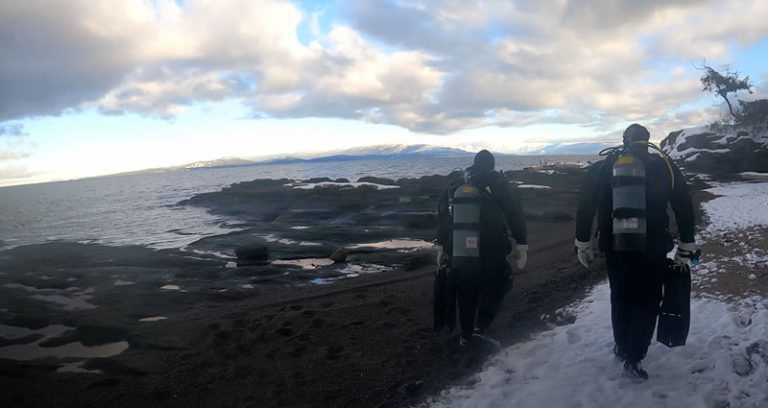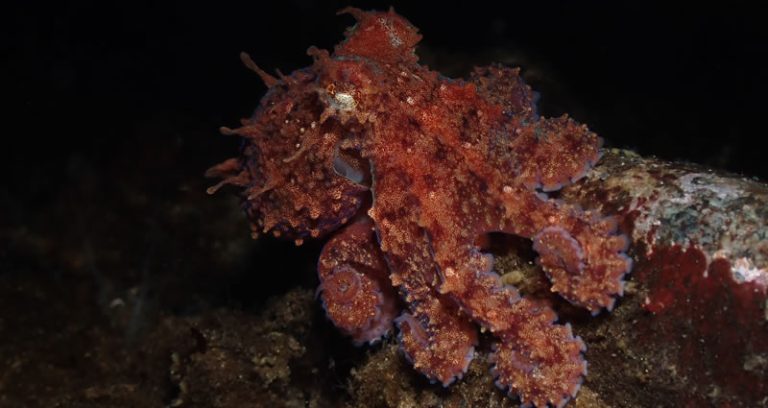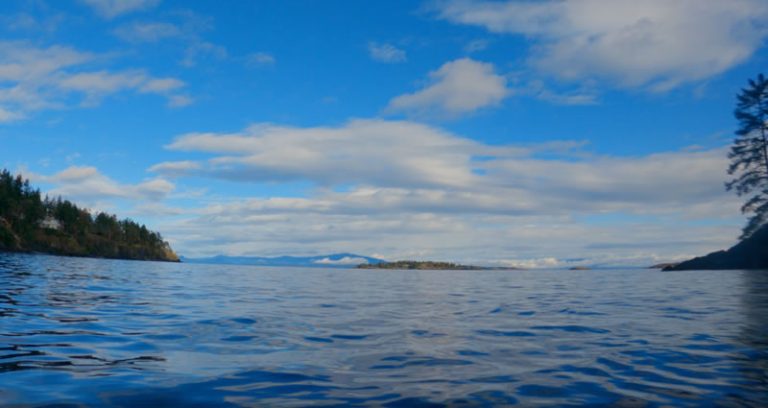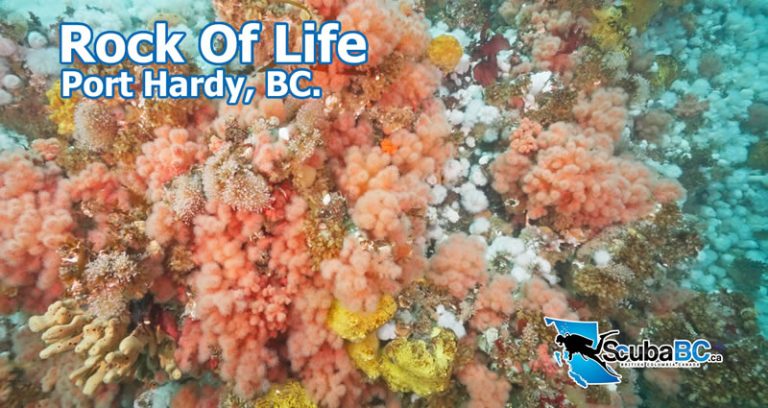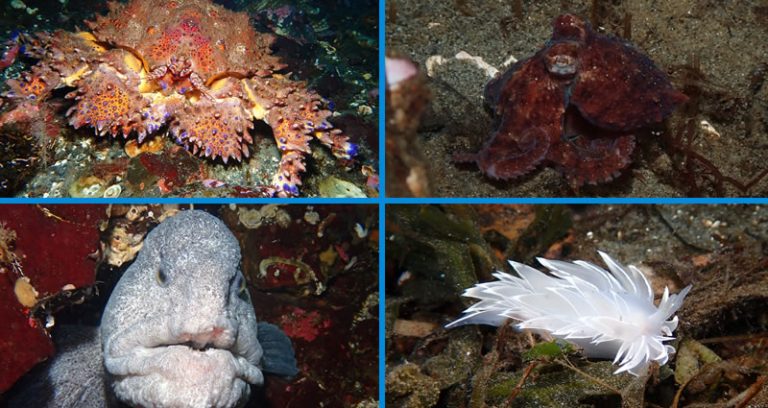The Ultimate Guide To Night Diving On Vancouver Island

Night diving off Vancouver Island is a scuba diving experience like no other. When the sun sets and the darkness envelops the underwater world, it transforms into a mysterious, other-wordly realm, teeming with different kinds of marine life and bursting with color. For those brave enough to venture beneath the waves after dark, the rewards are breathtaking. In this article, we will explore the specific gear needed for night diving, some of the best night diving sites around Vancouver Island, the marine life that comes alive at night, and the essentials you need to know to ensure you have a fun, safe, night diving experience.
Do You Need Any Certifications For Night Diving On Vancouver Island?
While there is no specific legal requirement to be certified for night diving on Vancouver Island, it is highly recommended that you complete a Night Diver specialty course before embarking on your first night dive. PADI and SSI both offer night diving specialty courses. Either of these courses will provide you with the necessary knowledge and skills to safely navigate and enjoy the unique experience of night diving.
During a Night Diver specialty course, you will learn about:
-
- Planning and organizing night dives: Understanding the additional considerations for planning and executing a night dive, including entry and exit points, communication, and buddy procedures.
- Night diving equipment: Familiarizing yourself with specialized equipment for night diving, such as dive lights, markers, and signaling devices.
- Underwater navigation at night: Learning how to use a compass and natural references for navigation in dark or very low visibility conditions.
- Nocturnal marine life behavior: Gaining insights into the unique behaviors of marine creatures at night, which can be different from their daytime activities.
- Managing emergencies: Preparing for potential emergency situations that may arise during a night dive, such as equipment failure or disorientation.
Completing a Night Diver specialty course not only ensures your safety and enjoyment during a night dive, but it may also be a requirement of dive operators or charter companies. They often require proof of night diving experience or certification to allow divers to participate in their night diving excursions.
The Gear You'll Need For Night Diving On Vancouver Island
To ensure a safe and enjoyable night diving experience, it's essential to have the right gear. You'll be a safer, more prepared diver, and you'll be a better a dive buddy too. Aside from your standard scuba gear, here are the key items you'll need for a successful night dive:
-
- Dive lights: A primary dive light is essential for illuminating your path, signaling your dive buddies, and revealing the vibrant colors of the marine life you'll see. A secondary or backup light is an extremely good idea in case your primary light floods, the battery dies, or it fails in some way. I am often carrying four dive lights during night dives as I have my primary flashlight and a backup light also 2 separate video lights attached to my camera tray.
- Marker lights: Attach these to your tank or BCD to make yourself visible to your dive buddy and other divers. They can be set to a variety of different colors so you can tell who's who when you're underwater with multiple divers.
- Compass and dive computer: A compass is crucial for navigation, while a dive computer helps you monitor your depth, time, and ascent rate during the dive. Many dive computers have a built-in compass but it's still a pretty good idea to carry a diving compass for backup.
- Dive knife or cutting tool: In case you need to free yourself or a dive buddy from an entanglement, a dive knife or cutting tool is always an essential tool.
- Surface marker buoy (SMB) and reel: This is important for marking your position on the surface should you need to surface in more exposed water and not a sheltered bay.
- Shore lighting or beacon: Having a small LED lantern on shore or a friend or family member who doesn't mind hanging around on shore with a flashlight is always a big help when you surface and need to find the exit point in the dark. We usually have a small LED lantern that we always turn on and leave on the shore at our exit point. It has come in handy numerous times.
Best Night Diving Sites Around Vancouver Island
Vancouver Island boasts many world-class night diving spots that are home to an array of marine life. Here are some of the top night shore diving sites on Vancouver Island that I have actually dove:
-
- Oak Leaf Park (Big Bay), Nanoose: The big bay at Oak Leaf Park is an amazing night dive. There is a variety of bottom terrain including eel grass beds, rocky bottom, and as you get a little further out, about 40 feet deep depending on the tide, you'll hit a nice, smooth and sandy bottom. There is a ton of life at Oak Leaf in the evenings. We've found multiple stubby squid, opalescent squid, and baby octopuses, and all during the same dive! It's a shallow dive, generally 20-40 feet, making it fantastic site for newer divers or those new to night diving.
- Charlaine Boat Ramp: This boat ramp is located close to Neck Point Park in Nanaimo. The boat ramp offers a nice entry point. If you head out to shack island you'll eventually reach a sandy bottom with eel grass beds. It's an excellent place to find Hooded Nudibranchs in the spring, jellyfish, crabs, and a host of other invertebrates.
- Tyee Cove, Nanoose: With easy entry and fairly simple navigation Tyee Cove is another favorite night diving site. The right wall is the more popular way to go for deeper night dives as you can easily get down to a depth of 80-100 feet. For less experienced divers or those who enjoy staying shallower, there is a ton of live to see above 60 feet too. Baby octopus, stubby squid, opalescent squid, and we've also caught large mature octopuses out of their dens as well. My most memorable night diving experience at Tyee Cove was running into a large school of pacific herring that literally ran us over.
- Keel Cove, Nanaimo: Keel cove is a neat little dive sight, perfectly suited to night dives. You get a variety of bottom terrain including rocky bottom, a small reef, and lots of sand. There is also a small sailboat wreck that houses a variety of life too. It's an excellent spot to find stubby squid, baby octopus, baby puget sound king crabs, and even grunt sculpins.
- Madrona Point, Nanoose: So long as you're diving on a slack tide, Madrona point can offer a few different night dives. The main wall is amazing at night with multiple octopus and wolf eel dens along the wall. It's common to find stubby squid and baby octopuses in the sand. Schools of baitfish are also common.
Do you have a favorite night diving site on Vancouver Island? Let us know in the comments below! I'd love to dive it!
Marine Life You Might See Night Diving On Vancouver Island
The nocturnal underwater world is a fascinating place, with many marine creatures emerging from their hiding places to feed and explore once the suns goes down and sea goes dark. Some of the marine life you can expect to encounter during a night dive off Vancouver Island includes:
#1. Baby Octopuses: The waters surrounding Vancouver Island are home to a variety of fascinating cephalopods, including the elusive baby giant Pacific octopuses (Enteroctopus dofleini) and ruby octopuses (Octopus rubescens).
Both of these species are primarily nocturnal, meaning that they are more active during the night, making night diving an ideal time to catch a glimpse of these remarkable creatures. The baby giant Pacific octopus, despite its diminutive size compared to its adult form, is already equipped with the exceptional camouflage abilities and intelligence that the species is renowned for.
On the other hand, the ruby octopus is a small, cryptic species known for its reddish coloration and ability to change its skin texture to blend seamlessly with its surroundings. Night diving allows divers the opportunity to observe these fascinating cephalopods as they emerge from their daytime hiding spots to hunt for prey and explore their underwater world.
Encounters with baby giant Pacific octopuses and ruby octopuses during a night dive provide a captivating and memorable experience, offering a unique insight into the nocturnal behaviors of these extraordinary marine animals.
#2. Jelly Fish: Jellyfish are fascinating marine creatures that can be found in oceans worldwide, captivating divers with their delicate and ethereal beauty. In the waters around Vancouver Island, several species of jellyfish can be encountered, each with their unique characteristics.
The Sea Gooseberry (Pleurobrachia bachei), Oval Sea Gooseberry (Pleurobrachia globosa), and Lobed Sea Gooseberry (Bolinopsis infundibulum) belong to the Ctenophora phylum, commonly known as comb jellies. These bioluminescent, gelatinous animals are characterized by their transparent bodies and shimmering, iridescent cilia, which they use for propulsion.
The Tailed Jelly (Polyorchis pencillatus) is another species that can be found in the region, displaying a bell-shaped body with long, slender tentacles that trail behind it as it moves through the water.
Finally, the Moon Jelly (Aurelia aurita) is a well-known and widespread species, easily recognizable by its saucer-like, translucent bell adorned with a distinctive four-leaf clover pattern at its center. The diverse array of jellyfish found in these waters highlights the rich and vibrant marine ecosystem that exists beneath the waves, providing divers with a truly enchanting experience.
#3. Nudibranchs:
The Salish Sea boasts an eclectic and vibrant assortment of marine life, which includes an impressive collection of nudibranchs. Also known as sea slugs, nudibranchs are soft-bodied mollusks that display an astonishing array of forms, dimensions, and hues. Over 200 species thrive in the Salish Sea, providing divers with ample opportunities to observe these exquisite creatures during their underwater explorations.
Among the most remarkable nudibranch species inhabiting the Salish Sea is the Hooded Nudibranch (Melibe leonina). This transparent sea slug possesses a sizable, expandable oral hood that it employs to ensnare tiny prey such as plankton.
The Opalescent Nudibranch (Hermissenda crassicornis) is yet another visually striking species, exhibiting vivid shades of orange, blue, and white along its body. The Red-Gilled Nudibranch (Flabellina verrucosa) is a slender, elongated sea slug distinguished by its deep red gills and rhinophores, while the Frosted Nudibranch (Dirona albolineata) displays a more understated elegance, with a translucent body adorned with fine white patterns.
In addition to these eye-catching species, divers can also come across various other nudibranch types in the Salish Sea, such as the White-Lined Dirona (Dirona picta), featuring a light-colored body embellished with white lines and orange-tipped rhinophores.
The Monterey Dorid (Doris montereyensis) is another intriguing species, identified by its vivid yellow hue and bumpy surface. With the immense diversity of nudibranchs inhabiting the waters surrounding Vancouver Island, every dive presents an opportunity to uncover and marvel at the distinct allure of these enchanting sea slugs.
#4. Crustaceans: Night diving on Vancouver Island presents an opportunity to encounter a diverse range of crustaceans that become more active after the sun goes down. Some of the crustaceans you might encounter during a night dive off the Island could include: Dungeness Crab (Metacarcinus magister). This large, edible crab is commonly found in the Salish Sea and can be easily recognized by its wide, hard shell and prominent claws.
Red Rock Crab (Cancer productus) is another popular crab species in the region, the Red Rock Crab has a robust, reddish shell and strong claws, making it well-adapted to its rocky habitat. Northern Kelp Crab (Pugettia producta) is typically found in kelp forests or among eelgrass beds, the Northern Kelp Crab is a medium-sized crab with a distinctive triangular carapace.
Decorator Crab (Oregonia gracilis) are a small, fascinating crab species known for attaching pieces of algae, sponges, or other materials to its body as a form of camouflage. There are various shrimp species in the Salish Sea, including the Coonstripe Shrimp (Pandalus danae), the Spot Prawn (Pandalus platyceros), and the Humpback Shrimp (Pandalus hypsinotus).
These are just a few examples of the crustaceans you might encounter while night diving in the Salish Sea.
#5. Stubby Squid: The stubby squid, scientifically known as Rossia pacifica, is a captivating small cephalopod found night diving on Vancouver Island. Often mistaken for a cross between an octopus and a squid, the stubby squid is actually more closely related to cuttlefish. Measuring from the size of a pea up to 3 or 4 inches in length, these charming creatures are characterized by their rounded, stubby bodies and large, expressive eyes that often appear to be wearing a perpetual look of surprise.
Their coloration varies from reddish-brown to purple and is marked by white spots or blotches, providing them with excellent camouflage against the sandy or muddy seafloor where they are typically found. Stubby squids are nocturnal hunters, primarily feeding on small crustaceans and fish. During the day, they can be found partially buried in the sediment, with only their eyes and a small portion of their mantle exposed. Observing these endearing creatures during a night dive is a delight for divers, as they offer a glimpse into the rich diversity of the underwater world.
#6. Opalescent Squid: These small, bioluminescent cephalopods measure about 6 to 8 inches in length and are characterized by their slender, torpedo-shaped bodies and iridescent skin, which displays a mesmerizing array of colors under the right lighting conditions. Active primarily at night, opalescent squid can often be seen hunting for small fish and crustaceans in the water column or darting through the darkness using their powerful siphon for propulsion. They are very attracted to bright dive lights so it's not uncommon to have one or a small group of them dart into your beam of light.
#7. Sailfin Sculpins: known for their unique appearance with a long dorsal fin that extends out and over their head. They are fascinating fish that inhabit various areas of the Pacific Northwest. These small fish, typically measuring around 4 to 10 inches in length, can be found in the coastal waters and estuaries stretching from British Columbia, Canada, down to Northern California, USA. Their preferred habitats include rocky shores, kelp forests, and eelgrass beds, where they seek shelter and camouflage among the abundant marine vegetation.
Sailfin sculpins have evolved to thrive in these diverse environments, utilizing their specialized pectoral fins to cling tightly to rocks and navigate through turbulent currents. With their mottled coloration and sail-like dorsal fins, these sculpins are masterful at blending in with their surroundings, often appearing like living artworks amidst the vibrant marine landscapes of the Pacific Northwest. Whether hiding in tide pools or exploring the shallow coastal zones, sailfin sculpins play an important role in the intricate web of marine life in this ecologically rich region.
Carry At Least Two Dive Lights
We touched on this earlier but it deserves repeating. A dive light is an essential piece of equipment for night diving. It's used to find your way, signal dive buddies, and illuminate the marine you'll see. When choosing a dive light, consider factors such as beam width, brightness, battery life, and durability. Carry a backup light just in case your primary light has a flood, malfunctions, or the battery dies. You don't want to be caught in the dark, underwater!
Dive Lights I Carry At Night:
- 1200 lumen Big Blue (my backup light)
- 2600 lumen Big Blue (my primary light)
- 2 x 15,000 lumen Kraken video lights (always on at least the low setting on my tray)
This is a lot of light to be carrying with me but I use them all differently. My primary light is used to signal my buddies, spot critters further in the distance, and to spotlight navigational aids. It is held onto my BCD with a Gear Keeper on a retractable cord. My two video lights aren't very useful for getting someone's attention, but my dive buddies certainly always know where I am. The video lights are generally on for the duration of the dive but I keep them on the lowest power setting until I see something to film.
In the event of a failure of primary light I my video lights are available immediately and in the event that one of my dive buddies forgets their primary or backup light, I have another spare to lend them.
Understand Underwater Navigation
Underwater navigation is a critical skill for night diving, as darkness makes it much more challenging to maintain your bearing and find your way back to the shore. Here are some tips for improving your underwater navigation skills:
-
- Practice using a compass: Familiarize yourself with the use of a compass, both on land and underwater. Knowing how to take bearings and follow a reciprocal course is essential for navigating in low visibility conditions.
- Always take a bearing to shore: Knowing the direction to shore is critical on a night dive as underwater you're limited to the view of your dive light and that's it! Before descending I always take a bearing to shore and also mark the bearing on my Shearwater Perdix dive computer. I've started carrying a backup analogue compass as well for backup.
- Use natural references: Take note of any prominent natural features as you go about your dive, such as recognizable rocks, or even debris like tires or mooring blocks, and anything else stationary that can serve as a recognizable landmark during your dive. When we dive at Oak Leaf Community Park there are several underwater objects we use as navigational aids including a few tires, an old decomposing log, a couple of mooring buoys, a big round metal sphere, and concrete blocks.
- Trust your compass: It's EASY to get turned around underwater, especially at night. When you throw photography or underwater video into the mix and you're constantly changing your orientation. It can get confusing really quick. The direction you "think" is home is often wrong, so always trust your compass when you're confused or turned around.
- Communicate with your dive buddy: Make sure you and your dive buddy are on the same page when it comes your dive plan and navigation, and regularly check in with each other during the dive.
Are You Ready To Go Night Diving On Vancouver Island?
Night diving on Vancouver Island offers a unique and unforgettable experience, revealing a hidden world of wonder and beauty that you just can't find during the daylight hours. With the right gear, knowledge of the best diving sites, and an understanding of the marine life that comes alive at night, divers can explore with confidence.

